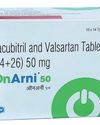
Extracorporeal Membrane Oxygenator (ECMO) is a surrogate lung or heart that can be used in patients who suffer from heart or lung failure. The first reported adult ECMO case was in the year 1972, and first neonate ECMO case in 1975. This technology was used in children with heart disease or lung failure for many years in the western countries.
It was accepted as a treatment modality for adult patients after the 2003 Swine Flu pandemic, and its use became more global with more Asia Pacific countries utilizing ECMO for severe viral lung failure. In India, the use of ECMO was limited to cardiac surgery patients, and it was largely unknown as a life-saving option to the general population.
During the COVID10 pandemic, as the lung failures were severe and ventilators were not able to achieve gas exchange, ECMO emerged as a sought-after treatment modality. However, as the technology was new to India, the number of providers with expertise as well as number of hospitals with the infrastructure and equipment were limited.
ECMO ADOPTION PREREQUISITES
ECMO is costly, resource intensive, and needs skilled manpower. ECMO needs a multidisciplinary team effort, advanced diagnostics, trained nursing, special equipment and specifically designed ICU cubicles.
This infrastructure is usually present in cardiac and transplant centers. Patients admitted under adult or pediatric critical care, for both—cardiac surgery and/or for medical management of shock or respiratory failure—may benefit from ECMO.
This story is from the {{IssueName}} edition of {{MagazineName}}.
Start your 7-day Magzter GOLD free trial to access thousands of curated premium stories, and 9,000+ magazines and newspapers.
Already a subscriber ? Sign In
This story is from the {{IssueName}} edition of {{MagazineName}}.
Start your 7-day Magzter GOLD free trial to access thousands of curated premium stories, and 9,000+ magazines and newspapers.
Already a subscriber? Sign In

KIMSHEALTH launches electrophysiology lab with 3D mapping
'ENSITE X' is the first of its kind in Kerala and the third in India enabling precise identification, mapping, and targeting the abnormal electrical activities in the heart.

Molbio boosts Goa's healthcare system with CSR initiatives
The company has donated four state-of-the-art Advanced Life Support (ALS) ambulances and two hearse vans for National Highway emergencies

USV introduces affordable heart failure medication
This cost-effective option addresses the rising cases of heart failure in India, offering lifesaving care to millions of patients who need it the most.

City Imaging & Clinical Labs to expand services to 50 hospitals
The company is currently associated with 10 hospitals, providing comprehensive lab management services, including 24/7 in-house phlebotomy and lab testing.

Oncare raises $1 million in seed funding, to set up 10 units
Oncare has raised $1 million in a seed funding round led by Huddle Ventures. It plans to deploy the raised capital to expand its operations to 10 new centers.

Nutrabay forays into Ayurvedic supplements market with Shilajit
Nutrabay's aims at gaining market share from the existing ayurveda supplements market with a distinctive product proposition and education about the benefits of Shilajit.

INDIA'S PREPAREDNESS ON HEALTHCARE-ASSOCIATED INFECTIONS: A GROWING FOCUS ON PATIENT SAFETY
The country's diverse healthcare landscape necessitates a flexible and multifaceted approach to infection control that can be adapted to various settings and resource levels.

TRANSFORMING CARDIAC SURGERY: HOW AI IS REVOLUTIONIZING PATIENT CARE AND OUTCOMES
Dr. Swarup Swaraj Pal shared his insights on the current state and future prospects of AI in cardiac procedures.

BEYOND THE LAB: THE CRITICAL ROLE OF LOGISTICS IN INDIA'S PHARMACEUTICAL INDUSTRY
As India continues to expand its role in the global pharmaceutical market, the importance of a robust, reliable, and innovative logistics infrastructure cannot be overstated.

LIFESTYLE DISEASES IN CHILDREN: A WAKE-UP CALL FOR A HEALTHIER GENERATION
In today's fast-paced world, children face an unexpected enemy: lifestyle diseases. Conditions like obesity, Type 2 diabetes, and hypertension are now affecting our youth. What's causing this shift, and how can we combat it?